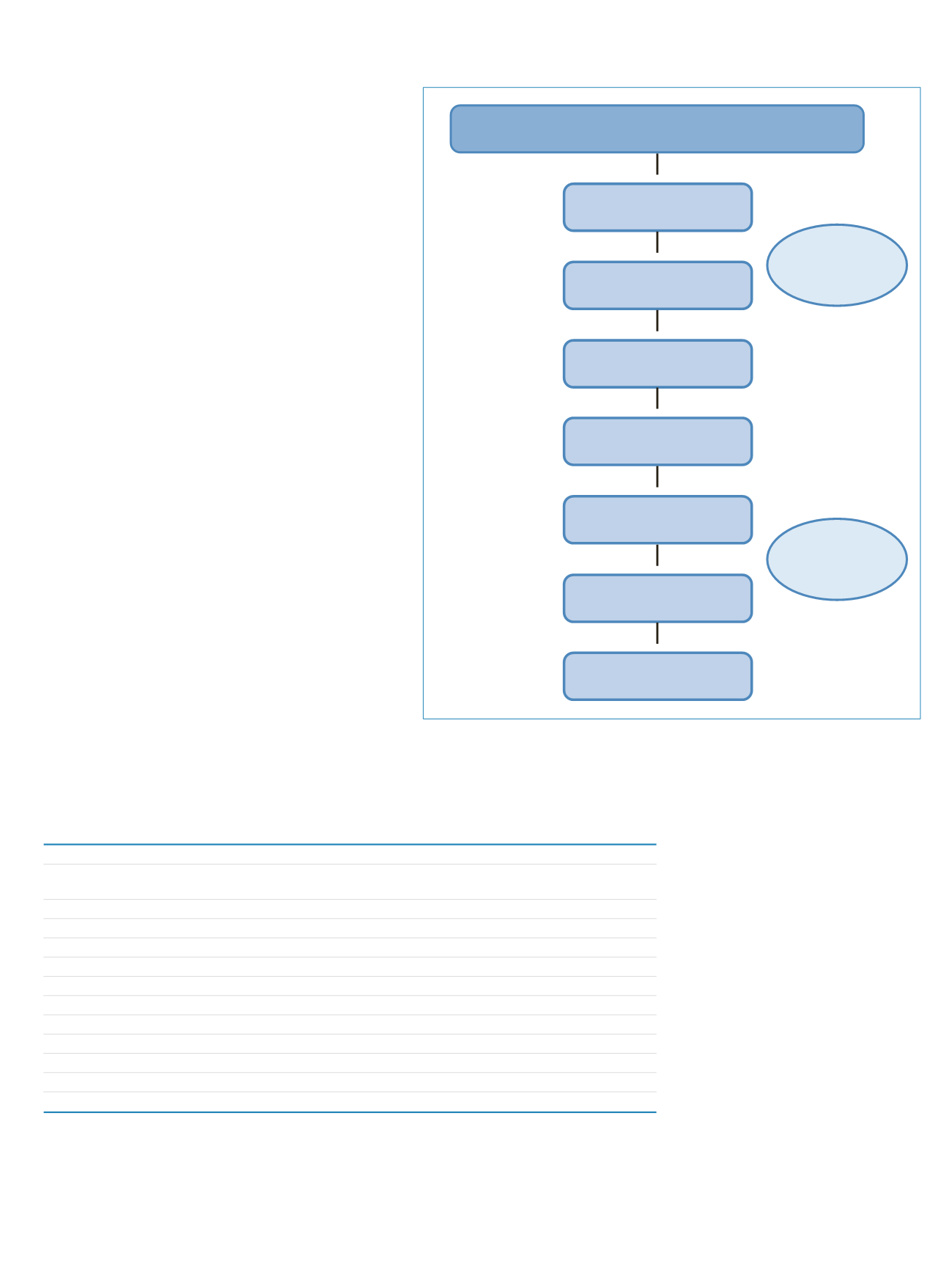

LC-MS/MS conditions
HPLC separation was done with a Thermo Scientific
Surveyor HPLC system. Separation conditions are given in
Table 1. Detection and quantification of the analytes were
performed with a Thermo Scientific TSQ Quantum Ultra
triple stage quadrupole mass spectrometer using selective
reaction monitoring (SRM) (Table 2). Preliminary
experiments were performed with two atmospheric
pressure ionization (API) sources – ESI and APCI – to
detect all compounds. Although some compounds showed
a slightly higher intensity with the ESI source (i.e.
atrazine), APCI was selected because of the higher
sensitivity provided for steroids. This endocrine disruption
class is an important analytical challenge due to the low
detection limits (1 ng/L) required for the determination of
these compounds. These compounds are known to affect
the living organisms at very low concentrations. Given
that the aim was to develop a simple analytical method to
detect as wide a range of compounds as possible, we
selected the APCI source. The small loss in sensitivity for
some easily measured molecules was more than
compensated by the gain in sensitivity for other
compounds that could not have been detected using ESI.
Moreover, APCI ionization is known in some cases to be
less susceptible to matrix interferences than ESI
ionization
10
. Lastly, some authors demonstrated signal
suppression for analysis of various organic waste
compounds in water samples using ESI-LC-MS/MS
11
.
The identification of analytes was confirmed by the
LC retention time
12,13
. Instrument control and data
acquisition were performed with Thermo Scientific
Xcalibur software.
➛ ➛ ➛ ➛ ➛ ➛ ➛
Solid Phase Extraction
(200 mg, C18-like SPE cartridges)
1 Conditioning:
2 Load:
3 Washing:
4 Drying:
5 Elution:
6 Evaporate:
7 Detection:
MTBE (3 mL)
MeOH (3 mL)
Reagent water (3 mL)
1 L filtered sample
Reagent water
3 mL
Nitrogen
40 min
10/90 MeOH/MTBE (3 mL)
MeOH (3 mL)
Nitrogen (Vf = 200 µL)
LC-APCI-MS/MS
Analysis
Surrogate
[
13
C
3
]-caffeine
Internal standard
[
13
C
3
]-atrazine and
[
13
C
3
]-estradiol
Figure 2: SPE enrichment procedure
Table 1: Instrument Parameters
HPLC
MS
Column:
Thermo Scientific Hypersil GOLD
Ionization mode:
APCI
+
APCI
-
(50 x 2.1 mm, 3 µm)
Column temperature:
30 °C
Discharge current:
3 µA
4 µA
Mobile phase A:
0.1% Formic acid/H
2
O
Vaporizer temperature: 500 °C
500 °C
Mobile phase B:
MeOH
Capillary temperature: 250 °C
250 °C
Injection volume:
20 µL
Sheath gas pressure:
40 arb units
30 arb units
Flow rate:
500 µL/min
Aux. gas pressure:
20 arb units
15 arb units
Gradient:
T=0,
A=90%, B=10%
Collision gas pressure: 1.5 mTorr
1.5 mTorr
T=1,
A=90%, B=10%
Source CID:
-10 V
15 V
T=15, A=1%, B=99%
T=16.5, A=1%, B=99%
T=17, A=90%, B=10%
T=22, A=90%, B=10%



















